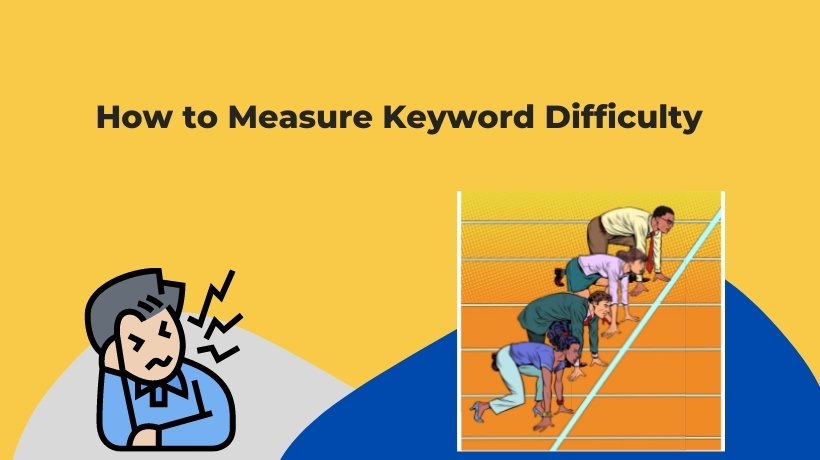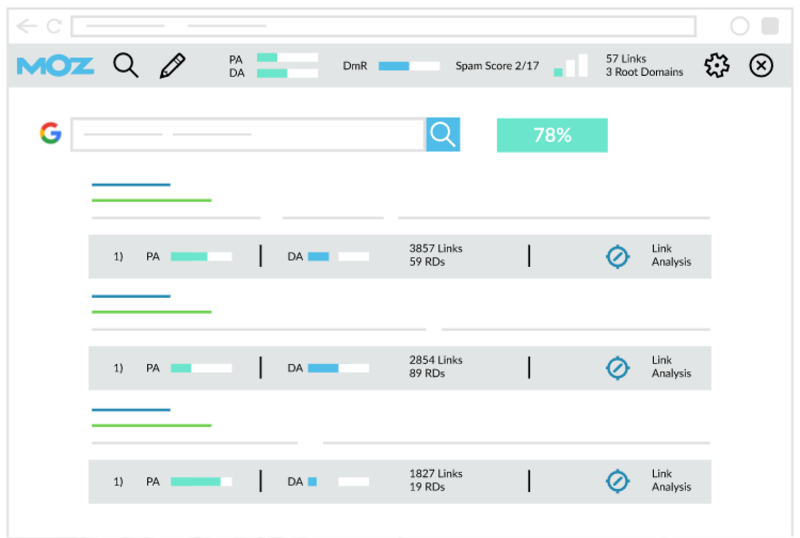Keyword Difficulty: How to Determine Your Ranking Potential
Finding a bunch of keywords that you want to rank for is easy. However, it is difficult to figure out what keywords might have the highest potential to be ranked. That’s why many keyword research tools provide a metric called “Keyword Difficulty”.
In this guide, we’ll take a closer look at what keyword difficulty is, why it’s so important when doing keyword research and how to measure keyword difficulty effectively.

Contents
What is Keyword Difficulty?
Keyword Difficulty (also known as “SEO difficulty” or “keyword competition”) is the process of evaluating how difficult it is to rank in Google’s organic search results for a specific term.
Keyword Difficulty is a critical metric when doing keyword research. The higher the value, the harder is to compete with others using that keyword. A keyword difficulty rating is used to help you choose SEO keywords with confidence, based on which ones are easy enough for your site to compete for.
There are many factors (both external and internal) that influence the degree of keyword difficulty, including the quality of the competitors’ pages and the quality of your page.
Note: Google Keyword Planner has a metric called “Competition”. Please note that this metric estimates the competition of paid keywords for PPC campaigns while keyword difficulty shows you how hard it is to rank for that keyword in organic search. Don’t confuse with them.
Why Keyword Difficult is an Important Metric?
Many beginner bloggers choose a high volume keyword, write great content, and optimize the page, but only find that they’re not ranking at all. Why?
The most common reason is that the keyword competition is too fierce. Therefore, if you don’t make the effort to check difficulty of the search term you’re trying to rank for before creating content, your SEO strategy is missing a major step.
By keeping an eye on keyword difficulty:
- You’ll get a good overview of what are the “hot” keywords and “big” players in your niche.
- You’ll be able to identify alternative keywords in your niche that you have an actual chance to rank for.
- You’ll be able to save a lot of time by focusing on keywords that can bring you results even if your website does not have much authority yet.
How Check and Measure Keyword Difficulty
So, how do you know just how difficult a keyword is to rank for? There are many ways to judge the keyword difficulty. And, you’d better use these ways in mix to get more accurate information.
1. Use A Keyword Research Tool
The quickest way to check a keyword’s difficulty is using a keyword research tool. Various SEO tools have implemented individual approaches to determining the difficulty of a keyword. The only issue is that every tool measures keyword difficulty differently.
- MOZ, for example, uses a combination of page authority and domain authority (which, in turn, is based on the number of referring domains.)
- SEMrush evaluates keyword difficulty based on the “authority” of ranking domains. The company does not reveal publicly how they assess that authority, though.
- Ahrefs counts the number of referring domains and bases the score on how many links you’d need to rank for a keyword.
Also, the keyword difficulty scores may differ from tool to tool, so it’s important to compare the values within one tool.
2. Evaluating Keyword Difficulty Score Based On First Page of Organic Search Results
You cannot rely on SEO tools to measure the keyword difficulty entirely. Sometimes, they can be unreliable. So, in some cases, you need to do manual analysis.
By looking at the top-performing content on page one (sometimes page two, as well) of SERPs, you gain a better idea of why certain pages appear higher in SERPs.
From a SERP analysis, you can answer the following questions, among others:
- What is the Domain/Page Authority of a site/page?
- How many links does this page have?
- How many referring domains does this page have?
- What keywords were used?
- What on-page SEO elements were used?
Moz even has a Chrome extension that does this automatically within SERPs:

Are the websites ranking similar to you in term of traffic and authority or are the first positions dominated by big names like Amazon, BBC or Wikipedia?
The more similar the websites ranking are to your blog, the more likely you are to rank.
In general, search results filled with high (DR) domain rating sites are extremely high-competition keywords and hard to rank for.
Also, if the search results in first page have many backlinks, it is hard to rank for, too.
3. Check SERP Volatility
Next, you can consider the movement of ranking pages across the first page of SERP.
If you see no to minimum changes in the SERP positions for the keyword you want to rank for and every page is able to secure its position for a long time, then it indicates there is high keyword difficulty.
4. Look for Signs of Low Competition
After you do this for a while you start to see patterns in SERPs with low keyword competition.
The 3 main signs of a low competition SERP are:
- Results with poor optimization (like if the title tags all look under-optimized)
- A lot of generic sites ranking
- Low-quality results (if you click on the result and it’s clearly thin content & not well done)
One of the most obvious ones is when there are a lot of “thin” sites ranking for terms.
For example:
- Multiple results of the same domain ranking
- Youtube URLs (not the Video carousel)
- Web 2.0s (like Blogspot, etc.)
- eBay listings
- Press releases sites
- etc.
When you see one or more “Easy Target Results” in the top 10, it’s time to celebrate. You just found a low-competition keyword.
5. Check The # Of SERP Results for The Keyword
Understanding just how many other websites are trying to rank for a keyword is a huge part of evaluating the competition.
Use Google to search the keyword and see how many results show up:

As of the time of writing this, there are 45,200,000 search results in Google’s index that are “relevant” for the keyword “keyword difficulty”.
Generally, the higher the number, the harder to rank for the keyword.
How to Use Keyword Difficulty in Your SEO Strategy?
So now that you have a better understanding of the ins and outs of keyword difficulty, how do you implement keyword difficulty into your SEO strategy to see success?
1. Do Comprehensive Keyword Analysis
Despite its critical importance, keyword difficulty score should not be the only factor to focus on. The other two important keyword metrics you need to consider are the search volume of the keyword and relevance. After all, if there’s low difficulty but the keyword has no search volume, you won’t get any traffic.
Keywords research and selection should be based on a comprehensive and detailed analysis of trends, volume, search intent, local ranking, and much more.
2. Understand Your KD Baseline
A Keyword Difficulty Baseline is a way we can answer the question “What terms could I expect to rank for with minimal effort based on how strong my website is currently?”
Actually, the importance of keyword difficulty depends very much on how well established and successful your website already is. If you have a high authority site that already ranks well for hundreds of competitive keywords, your best strategy is to target high volume keywords, regardless of difficulty. On the other hand, if you’re a small or medium-sized business, it’s essential to start by targeting keywords with a relatively low difficulty.
You can use Ahrefs or other similar tools to check the “Difficulty Distribution” of the keyword you have already ranked to understand you KD baseline.
3. Don’t Be Afraid of High Difficulty
The keyword difficulty metric alone shouldn’t deter you from trying to rank for a keyword with medium or higher difficulty.
It’s more about getting a general sense of what you’re up against and determining what you need to do to make your page a viable competitor.
Here’s a couple of things that can help your rank for a highly competitive keyword:
- Unique and Quality Content – you may outrank highly authoritative competitors with quality content that shows better expertise and covers the topic in a much deeper way.
- User Intent – The user’s intent is another important perspective that can help you to rank better for the desired keyword. If your content is good enough to make searchers happy then also you can beat the existing websites.
- Quality Backlinks – a high number of quality backlinks to a specific page can help you rank for that page even if your overall domain authority is lower.
- Domain Authority – Essentially, this reflects how valuable Google believes the content on your website is and whether or not you are a voice of authority on your subject matter.
Final Thoughts
That’s all related to keyword difficulty.
We have shared everything related to the keyword difficulty including what is keyword difficulty, why it is important for your SEO strategy, how to check keyword difficulty, and how to use keyword difficulty in your SEO strategy.
If you’re a small site with little content and you’re trying to rank in the top 10 search results for keywords with high difficulties, you may be aiming too high. Instead, look for variants of the topic that may have lower keyword difficulties. While they may not have as high of a search volume, you have a better chance of rank higher for them.
